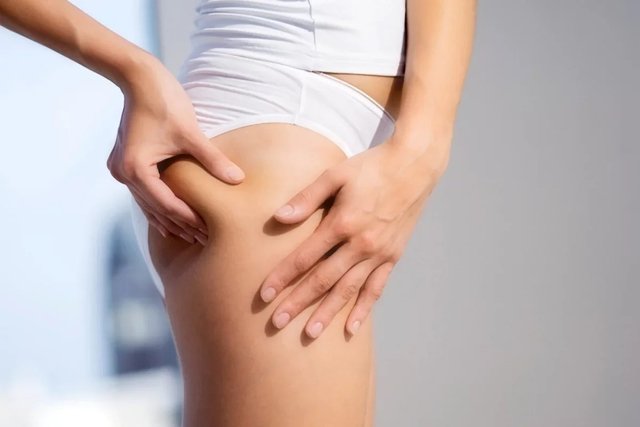To get rid of cellulite, there are several measures that you can employ, such as adequate nutrition and hydration, exercises to tone the legs and butt, as well as lymphatic drainage.
Furthermore, it is also possible to complement the treatment with some aesthetic procedures, such as radiofrequency or liposuction.. Cellulite is caused by the accumulation of fat due to excess fluid and toxins in these regions. There is no single treatment capable of eliminating cellulite quickly and definitively.
However, by following these guidelines, it is possible to eliminate grade 1 and 2 cellulite and transform grade 3 and 4 cellulite into grade 1 and 2 cellulite so that they are easier to eliminate.

Ways to get rid of cellulite
Some tips for eliminating cellulite include:
1. Adjusting your diet
Diet plans should ideally be guided by a registered dietitian, but in general, it is advised to reduce salt intake. You can instead season your food with aromatic herbs. Furthermore, it is advisable to consume detoxifying and diuretic foods, which help eliminate excess fluids and toxins from the body, such as spinach, tomatoes, apples, oranges, garlic, cucumbers or kiwi, for example.
Other foods that can be consumed are goji berries, which are rich in antioxidants, chia seeds, which are rich in omega-3, and pepper, which has thermogenic properties.
As for hydration, it is recommended to drink at least 2 liters of water per day to ensure the body is well hydrated and keep the skin elastic and healthy. Green tea can be consumed to help with cellulite to help flush out excess fluids and toxins. Check-out naturally diuretic teas that you can prepare.
2. Regular exercise
Exercises to combat cellulite should preferably be guided by a personal trainer. However, you are advised to engage in aerobic exercise such as brisk walking, running or stationary cycling to increase calorie expenditure and reduce accumulated fat.
In addition to these exercises, you can tone and strengthen the muscles of the legs and glutes with specific exercises that involve weight training. Read more about how to organize your leg workout.
3. Lymphatic drainage
To eliminate excess fluid from the lower region of the body to visibly reduce cellulite, you can perform lymphatic drainage sessions on a daily basis. This can be done manually or with a device.
Two examples of devices that can be used against cellulite are pressotherapy and mechanical lymphatic drainage with the RAGodoy® device for at least 2 hours a day. Both devices can be effective in combating cellulite because they can mobilize a good amount of interstitial fluid back into the lymphatic circulation system to be eliminated through urine.
4. Cosmetic procedures
In addition to the above methods, treatment can be complemented with cosmetic procedures that eliminate fat located in a certain region. Good examples are lipsuction, high-power ultrasound or radiofrequency.
These treatments can be done in cosmetic clinics and provides excellent results. They can eliminate cellulite in any part of the body, such as legs, buttocks, abdomen and arms. However, they should only be performed up to 3 times a week, and should not replace the methods mentioned above.
It is important for each case of cellulite to be evaluated individually, as there is no single treatment that can be effective for all. A dermatologist or a trained cosmetic professional are ideal for performing a detailed assessment and to recommend the most appropriate treatment.
Is it possible to eliminate cellulite?
Cellulite is an inflammation of the subcutaneous tissue that forms as a reaction to hormonal changes, genetic factors, diet and asedentary lifestyle. Very deep and visible cellulite is generally more difficult to eliminate.
Very mild and barely visible cellulite can be treated, however, and it is possible to prevent the progression of the disease and eliminate it more easily.
The time it takes to eliminate cellulite can vary according to the person's skin type, skin type and genetic condition. This is why a carefuly assessment and diagnosis from a dermatologist is recommended.
